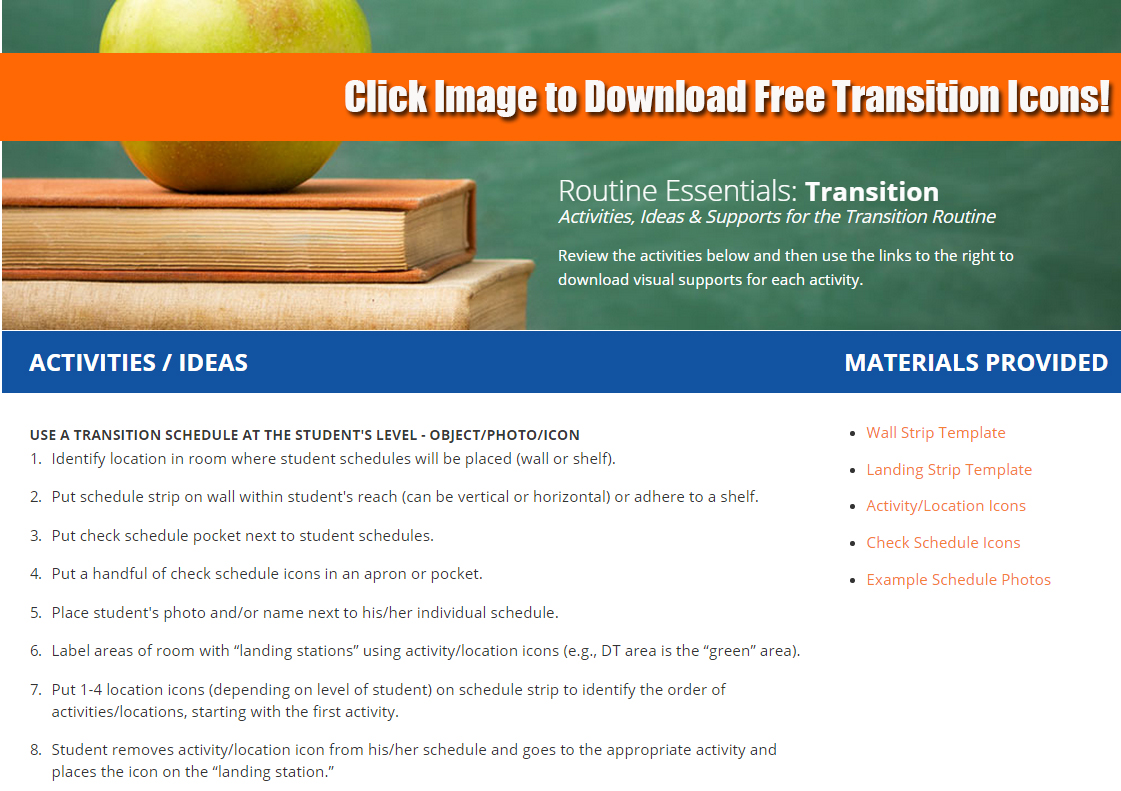Teaching Routines From the Start - Back to School
The first weeks of school can be exciting yet overwhelming for students, families, and school staff. New schedules and routines, new teachers and classmates, and a new school or classroom can lead to increased anxiety for students with autism. The more structure, visual supports, and consistent routines that staff can provide from the first day of classes, the quicker students will adapt and respond to school routines in a positive manner. Here are some tips for teaching routines right from the start.
1. Create a daily and weekly classroom schedule for students and staff. In addition to classroom schedules, each student and staff member should have an individualized daily schedule.
2. Divide each day into common routines that all students will participate in. For example, this might include: Arrival, Calendar, Academic Work, Snack, Centers, Lunch, Recess and Departure routines.
3. Post visuals in each area of your room where these common routines occur and list the main steps of each routine or the classroom rules for that routine. This will make it clear to students and staff where certain routines occur and will facilitate more efficient routines. For the “Morning Circle” routine, you might post a mini schedule with the following steps: Hello Song, Weather, Smart board, and Calendar. Adults can then refer to this visual throughout the steps of the routine to remind students of what to do next.
4. To increase student motivation and positive behavioral supports during routines, use reinforcement systems (e.g., penny boards and/or tangible rewards) to reinforce student behaviors as they transition to new routine areas and participate appropriately during daily routines. As students transition to routines appropriately (e.g., sit down at circle), provide a tangible award such as a fidget, small toy, or edible.
5. Remind your staff to use common language and to be consistent with their verbal cues during daily routines. Post examples of common language in several areas of your classroom. Some examples of common language include: “walk with me”, “check your schedule”, “hands down”, “first ____, then, _____”.
Getting started with a few classroom routines and providing visual supports will promote smoother transitions, increased student engagement and independence, less challenging behaviors, and generalization of new skills needed across the student’s day.


